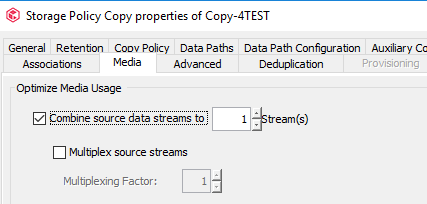Hello,
during regular DR-Tests we see problems with the jobresults directory usage for larger DBs (1 TB+):
Error Code: [30:375]
Description: Encountered error while writing to the file. Error code [28]. Please make sure there is enough disk space on [C:\Program Files\Commvault\ContentStore\iDataAgent\JobResults\CV_JobResults\2\0\4455051\RstStage].
Source: Clientname, Process: SQLiDA
CV stages the whole database there, so we must add an additional 3-5 TB disk for that in the DR-Site on each larger machine.
We have also bigger SQL machines which does not consume that much of space in the Job Results Directoy, even when the Jobresultsdirectory size is smaller than the size of DB we are restoring.
Does anybody know why this is different between SQL-Systems?
Best answer by Ron Potts
View original






